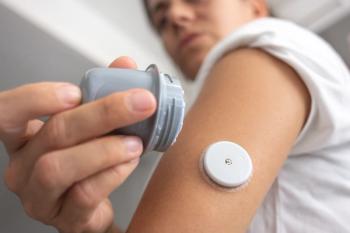
LC-MS/MS in Primary Central Nervous System Lymphoma Diagnosis and Differentiation
A recent study used liquid chromatography tandem-mass spectrometry (LC-MS/MS) for a targeted proteomics analysis to establish cerebrospinal fluid-based proteomic panels for accurate primary central nervous system lymphoma diagnosis and differentiation.
A recent study conducted by Chinese and American hospitals and universities focused on validating a previous proteomic profiling of cerebrospinal fluid (CSF) and develop a CSF-based proteomic panel for accurate primary central nervous system lymphoma (PCNSL) diagnosis and differentiation. To achieve this validation, researchers used liquid chromatography tandem-mass spectrometry (LC-MS/MS) targeted proteomics analysis to establish these panels.
The study (1) suggests an accurate clinical test panel for PCNSL diagnosis and differentiation with CSF-based proteomic signatures, which the researchers wrote could help overcome the challenges of current diagnostic methods and improve patient outcomes.
Although the paper’s authors state that numerous CSF studies have been performed to identify and develop a minimally invasive diagnostic test for PCNSL, inadequate cohort sizes and limited focus on certain molecular processes may overlook additional potential diagnostic biomarkers. Furthermore, other brain tumor lesions, such as glioblastoma or demyelination, that display similar symptoms and imaging results are often excluded as comparison groups, which could hinder the identification of unique biomarkers for PCNSL. These challenges, therefore, emphasize the need for more extensive and inclusive studies to develop a reliable and efficient diagnostic test for PCNSL.
Recently, a report of proteomic profiling study of PCNSL, secondary central nervous system lymphomas (SCNSL), multiple sclerosis, glioma, other tumors, and tumor-free controls conducted by several German university laboratories discovered a large set of proteomic signatures using a cohort of European patients (2). The paper’s authors conducted an extensive liquid chromatography-mass spectrometry (LC-MS/MS) targeted proteomic analysis in a cohort of Chinese population to validate the effectiveness and generalizabity of the signature molecules determined in that German study. The biomarkers identified through LC-MS/MS were used to construct proteomic panels that could differentiate PCNSL from both tumor-free controls and other brain tumor entities in CSF. The authors also investigated the underlying pathophysiological processes that cause the observed differences in protein biomarkers in PCNSL patients compared to other brain tumors and tumor-free controls.
The authors report that their study validated protein biomarkers discovery from a CSF proteomics profiling and resulted in the development of an accurate clinical test panel for PCNSL diagnosis and differentiation with CSF-based proteomic signatures. They said that this may help to overcome the challenges of current diagnostic methods, and the precise PCNSL differentiation from other brain tumor would provide indications for a customized treatment strategy to improve patient outcomes. However, the authors admit that, while their study offers promising insights, it is important to acknowledge some limitations, such as the small sample size used in the proteomic analysis, as well as the fact that the proteomics and transcriptomics data were generated from different populations and technology platforms. Furthermore, observed transcriptional differences may not necessarily lead to corresponding protein or functional differences. Further investigations are needed to identify these genes and their downstream proteins at the protein level and explore their functions. Despite these limitations, however, the authors conclude that the differences between the proteomics and transcriptomics data can contribute to the overall reliability of the study.
References
1. Ma, J.;Lin, Z.;Zhang, Y.; Ding, Y.;Tang, Q.; Qian, Y. et al. Targeted Multiplex Validation of CSF Proteomic Biomarkers: Implications for Differentiation of PCNSL from Tumor-Free Controls and Other Brain Tumors. Front. Immunol. 2024, 15. DOI:
2. Waldera-Lupa, D. M.; Poschmann, G.; Kirchgaessler, N.; Etemad-Parishanzadeh, O.;Baberg, F.; Brocksieper, M. et al. A Multiplex Assay for the Stratification of Patients with Primary Central Nervous System Lymphoma Using Targeted Mass Spectrometry. Cancers 2020, 12 (7), 1732. DOI:
Newsletter
Join the global community of analytical scientists who trust LCGC for insights on the latest techniques, trends, and expert solutions in chromatography.





